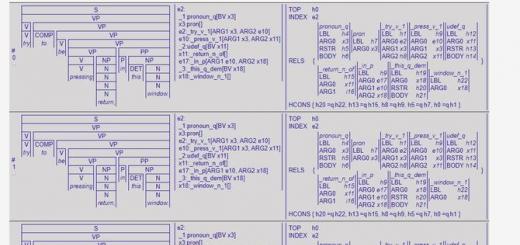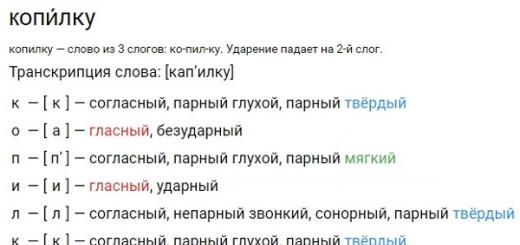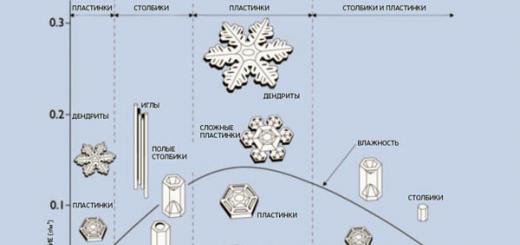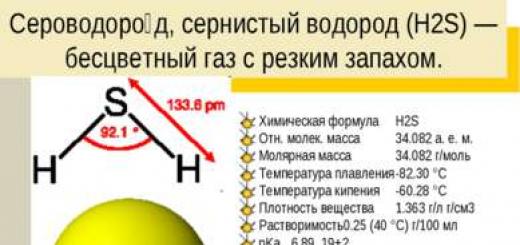The exponential function of a real variable (with a positive base) is determined in several steps. First, for natural values - as a product of equal factors. The definition then extends to negative integers and non-zero values for by the rules. Next, we consider fractional exponents in which the value of the exponential function is determined using roots: . For irrational values, the definition is already connected with the basic concept of mathematical analysis - with the passage to the limit, for reasons of continuity. All these considerations are in no way applicable to attempts to extend the exponential function to complex values of the indicator, and what it is, for example, is completely unclear.
For the first time, a power with a complex exponent with a natural base was introduced by Euler based on an analysis of a number of constructions of integral calculus. Sometimes very similar algebraic expressions, when integrated, give completely different answers:

At the same time, here the second integral is formally obtained from the first when replaced by
From this we can conclude that with the proper definition of an exponential function with a complex exponent, inverse trigonometric functions are related to logarithms and thus the exponential function is related to trigonometric ones.
Euler had the courage and imagination to give a reasonable definition for an exponential function with a base, namely,
This is a definition, and therefore this formula cannot be proven; one can only look for arguments in favor of the reasonableness and expediency of such a definition. Mathematical analysis provides many arguments of this kind. We will limit ourselves to just one.
It is known that for real there is a limiting relation: . On the right side there is a polynomial that also makes sense for complex values for . The limit of a sequence of complex numbers is determined naturally. A sequence is considered convergent if the sequences of real and imaginary parts converge and is accepted
Let's find it. To do this, let's turn to the trigonometric form and for the argument we will select values from the interval. With this choice it is clear that for . Further,

To go to the limit, you need to verify the existence of limits for and and find these limits. It is clear that

So, in the expression
the real part tends to , the imaginary part tends to so
This simple argument provides one of the arguments in favor of Euler's definition of the exponential function.
Let us now establish that when multiplying the values of an exponential function, the exponents add up. Really:
2. Euler's formulas.
Let us put in the definition of the exponential function . We get:
Replacing b with -b, we get
By adding and subtracting these equalities term by term, we find the formulas
called Euler's formulas. They establish a connection between trigonometric functions and exponential functions with imaginary exponents.
3. Natural logarithm of a complex number.
A complex number given in trigonometric form can be written in the form. This form of writing a complex number is called exponential. It retains all the good properties of trigonometric form, but is even more concise. Further, Therefore, it is natural to assume that the real part of the logarithm of a complex number is the logarithm of its modulus, and the imaginary part is its argument. This to some extent explains the “logarithmic” property of the argument - the argument of the product is equal to the sum of the arguments of the factors.
Proof of the formula .
![]() =
=
= ![]() =
=
since sine and cosine do not depend on adding an angle that is a multiple of
And this equality is already obvious, since this is the trigonometric form of a complex number.
Thus, the logarithm exists for all points in the plane except zero. For a real positive number, the argument is 0, so this infinite set of points has the form ![]() , that is, one of the values, namely, at , will fall on the real axis. If we calculate the logarithm of a negative number, we get , that is, the set of points is shifted upward and none of them falls on the real axis.
, that is, one of the values, namely, at , will fall on the real axis. If we calculate the logarithm of a negative number, we get , that is, the set of points is shifted upward and none of them falls on the real axis.
It is clear from the formula that only when the argument of the original number is zero, one of the logarithm values falls on the real axis. And this corresponds to the right semi-axis, and that is why in the school mathematics course only logarithms of positive numbers were considered. Logarithms of negative and imaginary numbers also exist, but they do not have a single value on the real axis.
The following drawing shows where all the values of the logarithm of a positive number are located in the plane. One of them is on the real axis, the rest are above and below on , , and so on. For a negative or complex number, the argument is non-zero, so this sequence of points is shifted vertically, resulting in no points on the real axis.

Example. Calculate.
Solution. Let's define the modulus of the number (equal to 2) and the argument 180 0, that is. Then = ![]() .
.
Appendix 1. Questions for evidence (for tickets).
Lecture No. 1
1. Prove the formula for integration by parts.
Lecture No. 2
1. Prove that the replacement , where r = LCM (r 1 ,...,r k) reduces the integral to the integral of a rational fraction.
2. Prove that the replacement reduces the integral of the form  to the integral of a rational fraction.
to the integral of a rational fraction.
3. Derive formulas for converting sine and cosine
For universal trigonometric substitution.
4. Prove that in the case when the function is odd with respect to the cosine, the replacement reduces the integral to a rational fraction.
5. Prove that in the case when
substitution: reduces the integral to a rational fraction.
6. Prove that for an integral of the form ![]()
7. Prove the formula ![]()
8. Prove that for an integral of the form ![]() the replacement produces an integral to a rational fraction.
the replacement produces an integral to a rational fraction.
9. Prove that for an integral of the form ![]() the replacement reduces the integral to a rational fraction.
the replacement reduces the integral to a rational fraction.
Lecture No. 3
1. Prove that the function  is an antiderivative of the function .
is an antiderivative of the function .
2. Prove the Newton-Leibniz formula:  .
.
3. Prove the formula for the length of an explicitly given curve:
 .
.
4. Prove the formula for the length of a curve given in polar coordinates 
Lecture No. 4
Prove the theorem: converges, converges.
Lecture No. 5
1. Derive (prove) the formula for the area of an explicitly given surface ![]() .
.
2. Derivation of formulas for the transition to polar coordinates.
3. Derivation of the Jacobian determinant of polar coordinates.
4. Derivation of formulas for the transition to cylindrical coordinates.
5. Derivation of the Jacobian determinant of cylindrical coordinates.
6. Derivation of formulas for the transition to spherical coordinates:
 .
.
Lecture No. 6
1. Prove that the substitution reduces a homogeneous equation to an equation with separable variables.
2. Derive the general form of the solution to a linear homogeneous equation.
3. Derive the general form of the solution to a linear inhomogeneous equation by the Lagrange method.
4. Prove that the substitution reduces Bernoulli's equation to a linear equation.
Lecture No. 7.
1. Prove that the replacement reduces the order of the equation by k.
2. Prove that the replacement reduces the order of the equation by one ![]() .
.
3. Prove the theorem: The function is a solution to a linear homogeneous differential equation and has a characteristic root.
4. Prove the theorem that a linear combination of solutions to a linear homogeneous diff. the equation is also its solution.
5. Prove the theorem on the imposition of solutions: If is a solution to a linear inhomogeneous differential equation with the right-hand side, and is a solution to the same differential equation, but with the right-hand side, then the sum is a solution to the equation with the right-hand side.
Lecture No. 8.
1. Prove the theorem that the system of functions is linearly dependent.
2. Prove the theorem that there are n linearly independent solutions to a linear homogeneous differential equation of order n.
3. Prove that if 0 is the root of the multiplicity , then the system of solutions corresponding to this root has the form .
Lecture No. 9.
1. Prove using exponential form that when multiplying complex numbers, the modules are multiplied and the arguments are added.
2. Prove Moivre’s formula for degree n
3. Prove the formula for the root of an order n complex number
4. Prove that ![]() And
And ![]()
are generalizations of sine and cosine, i.e. for real numbers, these formulas will yield sine (cosine).
5. Prove the formula for the logarithm of a complex number:
Appendix 2.
Minor and oral questions on knowledge of theory (for colloquiums).
Lecture No. 1
1. What are antiderivatives and indefinite integrals, how do they differ?
2. Explain why it is also an antiderivative.
3. Write the formula for integration by parts.
4. What replacement is required in the form integral and how does it eliminate roots?
5. Write down the type of decomposition of the integrand of a rational fraction into simplest ones in the case when all roots are different and real.
6. Write down the type of decomposition of the integrand of a rational fraction into simplest ones in the case when all roots are real and there is one multiple root of multiplicity k.
Lecture No. 2.
1. Write what is the decomposition of a rational fraction into simplest ones in the case when the denominator has a factor of 2 degrees with a negative discriminant.
2. What substitution reduces the integral to a rational fraction?
3. What are universal trigonometric substitutions?
4. What replacements are made in cases where the function under the integral sign is odd with respect to sine (cosine)?
5. What replacements are made if the integrand contains the expressions , , or .
Lecture No. 3.
1. Definition of a definite integral.
2. List some of the basic properties of the definite integral.
3. Write the Newton-Leibniz formula.
4. Write the formula for the volume of a body of revolution.
5. Write a formula for the length of an explicitly given curve.
6. Write the formula for the length of a parametrically defined curve.
Lecture No. 4.
1. Definition of an improper integral (using a limit).
2. What is the difference between improper integrals of the 1st and 2nd kind.
3. Give simple examples of convergent integrals of the 1st and 2nd kind.
4. At what values do the integrals (T1) converge?
5. How is convergence related to the finite limit of the antiderivative (T2)
6. What is a necessary criterion for convergence, its formulation.
7. Comparison test in final form
8. Sign of comparison in extreme form.
9. Definition of multiple integral.
Lecture No. 5.
1. Changing the order of integration, show with a simple example.
2. Write the formula for surface area.
3. What are polar coordinates, write the transition formulas.
4. What is the Jacobian of the polar coordinate system?
5. What are cylindrical and spherical coordinates, what is their difference.
6. What is the Jacobian of cylindrical (spherical) coordinates?
Lecture No. 6.
1. What is a 1st order differential equation (general view).
2. What is a 1st order differential equation resolved with respect to the derivative. Give some example.
3. What is an equation with separable variables.
4. What is a general, particular solution, Cauchy conditions.
5. What is a homogeneous equation, what is the general method for solving it.
6. What is a linear equation, what is the algorithm for solving it, what is the Lagrange method.
7. What is the Bernoulli equation, an algorithm for solving it.
Lecture No. 7.
1. What replacement is necessary for an equation of the form .
2. What replacement is needed for an equation of the form ![]() .
.
3. Show with examples how it can be expressed in the form .
4. What is a linear differential equation of order n.
5. What is a characteristic polynomial, characteristic equation.
6. Formulate a theorem about at what r the function is a solution to a linear homogeneous differential equation.
7. Formulate a theorem that a linear combination of solutions to a linear homogeneous equation is also its solution.
8. Formulate the theorem on the imposition of solutions and its consequences.
9. What are linearly dependent and linearly independent systems of functions, give some examples.
10. What is the Wronski determinant of a system of n functions, give an example of the Wronski determinant for LZS and LNS systems.
Lecture No. 8.
1. What property does the Wronski determinant have if the system function is linearly dependent.
2. How many linearly independent solutions exist to a linear homogeneous differential equation of order n.
3. Determination of the FSR (fundamental system of solutions) of a linear homogeneous equation of order n.
4. How many functions does the FSR contain?
5. Write down the form of the system of equations for finding by the Lagrange method for n=2.
6. Write down the type of particular solution in the case when
7. What is a linear system of differential equations, write an example.
8. What is an autonomous system of differential equations.
9. Physical meaning of a system of differential equations.
10. Write down what functions the FSR of the system of equations consists of, if the eigenvalues and eigenvectors of the main matrix of this system are known.
Lecture No. 9.
1. What is an imaginary unit.
2. What is a conjugate number and what happens when you multiply it by the original number.
3. What is the trigonometric, exponential form of a complex number.
4. Write Euler's formula.
5. What is the modulus, the argument of a complex number.
6. what happens to modules and arguments during multiplication (division).
7. Write Moivre’s formula for degree n.
8. Write the formula for a root of order n.
9. Write generalized sine and cosine formulas for a complex argument.
10. Write the formula for the logarithm of a complex number.
Appendix 3. Problems from lectures.
Lecture No. 1
Example. . Example. .
Example. . Example. .
Example. Example. .
Example. ![]() . Example.
. Example. ![]() .
.
Lecture No. 2
Example. . Example. .
Example. . Example. .
Example. . Example.. , where, number .
Example. Divide exponentially.
Example. Find using Moivre's formula.
Example. Find all values of the root.
Plan:
- Introduction
- 1
Real logarithm
- 1.1 Properties
- 1.2 Logarithmic function
- 1.3 Natural logarithms
- 1.4 Decimal logarithms
- 2
Complex logarithm
- 2.1 Definition and properties
- 2.2 Examples
- 2.3 Analytical continuation
- 2.4 Riemann surface
- 3
Historical sketch
- 3.1 Real logarithm
- 3.2 Complex logarithm
- 4 Logarithmic tables
- 5 Applications Literature
Notes
Introduction
Rice. 1. Graphs of logarithmic functions
Logarithm of a number b based on a (from Greek λόγος - “word”, “attitude” and ἀριθμός - “number”) is defined as an indicator of the power to which the base must be raised a to get the number b. Designation: . From the definition it follows that the records and are equivalent.
For example, because.
1. Real logarithm
Logarithm of a real number log a b makes sense when . As is known, the exponential function y = a x is monotonic and each value takes only once, and the range of its values contains all positive real numbers. It follows that the value of the real logarithm of a positive number always exists and is uniquely determined.
The most widely used types of logarithms are:
1.1. Properties
Proof
Let's prove that .
(since by condition bc > 0). ■
Proof
Let's prove that
(since by condition ■
Proof
We use the identity to prove it. Let's logarithm both sides of the identity to base c. We get:
Proof
Let's prove that .
(because b p> 0 by condition). ■
Proof
Let's prove that
Proof
Logarithm the left and right sides to the base c :
Left side: Right side:
The equality of expressions is obvious. Since logarithms are equal, then, due to the monotonicity of the logarithmic function, the expressions themselves are equal. ■
1.2. Logarithmic function
If we consider the logarithmic number as a variable, we get logarithmic function y=log a x (see Fig. 1). It is defined at . Range of values: .
The function is strictly increasing at a> 1 and strictly decreasing at 0< a < 1 . График любой логарифмической функции проходит через точку (1;0) . Функция непрерывна и неограниченно дифференцируема всюду в своей области определения.
Straight x= 0 is a left vertical asymptote, since at a> 1 and at 0< a < 1 .
The derivative of the logarithmic function is equal to:
Proof
I. Let us prove that
Let's write down the identity e ln x = x and differentiate its left and right sides
We get that, from which it follows that
II. Let's prove that
The logarithmic function carries out an isomorphism between the multiplicative group of positive real numbers and the additive group of all real numbers.
1.3. Natural logarithms
Relationship with the decimal logarithm: .
As stated above, the derivative of the natural logarithm has a simple formula:
For this reason, natural logarithms are predominantly used in mathematical research. They often appear when solving differential equations, studying statistical dependencies (for example, the distribution of prime numbers), etc.
The indefinite integral of the natural logarithm can be easily found by integrating by parts:
The Taylor series expansion can be represented as follows:
when the equality is true
| (1) |
In particular,
This series converges faster, and in addition, the left side of the formula can now express the logarithm of any positive number.
1.4. Decimal logarithms
Rice. 2a. Logarithmic scale
Rice. 2b. Logarithmic scale with symbols
Logarithms to base 10 (symbol: lg a) before the invention of calculators were widely used for calculations. The uneven scale of decimal logarithms is usually applied to slide rules. A similar scale is used in many fields of science, for example:
- Physics - sound intensity (decibels).
- Astronomy - star brightness scale.
- Chemistry - hydrogen ion activity (pH).
- Seismology - Richter scale.
- Music theory - a scale of notes, in relation to the frequencies of musical notes.
- History is a logarithmic time scale.
The logarithmic scale is also widely used to identify the exponent in power relations and the coefficient in the exponent. In this case, a graph constructed on a logarithmic scale along one or two axes takes the form of a straight line, which is easier to study.
2. Complex logarithm
2.1. Definition and properties
For complex numbers, the logarithm is defined in the same way as a real one. In practice, the natural complex logarithm is used almost exclusively, which we denote and define as the set of all complex numbers z such that e z = w . The complex logarithm exists for any , and its real part is determined uniquely, while the imaginary part has an infinite number of values. For this reason it is called a multi-valued function. If you imagine w in demonstrative form:
,then the logarithm is found by the formula:
Here is the real logarithm, r = | w | , k- arbitrary integer. The value obtained when k= 0, called main importance complex natural logarithm; it is customary to take the value of the argument in it in the interval (− π,π]. The corresponding (already single-valued) function is called main branch logarithm and is denoted by . Sometimes they also denote a logarithm value that is not on the main branch.
From the formula it follows:
- The real part of the logarithm is determined by the formula:
- The logarithm of a negative number is found by the formula:
Since complex trigonometric functions are related to the exponent (Euler's formula), the complex logarithm, as the inverse function of the exponential, is related to the inverse trigonometric functions. An example of such a connection:
2.2. Examples
Let's give the main value of the logarithm for some arguments:
You should be careful when converting complex logarithms, taking into account that they are multi-valued, and therefore the equality of the logarithms of any expressions does not imply the equality of these expressions. Example of flawed reasoning:
iπ = ln(− 1) = ln((− i) 2) = 2ln(− i) = 2(− iπ / 2) = − iπ - sheer absurdity.Note that on the left is the main value of the logarithm, and on the right is the value from the underlying branch ( k= − 1 ). The cause of the error is the careless use of the property, which, generally speaking, implies in the complex case the entire infinite set of logarithm values, and not just the main value.
2.3. Analytical continuation
Rice. 3. Complex logarithm (imaginary part)
The logarithm of a complex number can also be defined as the analytic extension of the real logarithm to the entire complex plane. Let the curve Γ begin at unity, not pass through zero, and not intersect the negative part of the real axis. Then the principal value of the logarithm at the end point w curve Γ can be determined by the formula:
If Γ is a simple curve (without self-intersections), then for the numbers lying on it, logarithmic identities can be applied without fear, for example
If the curve Γ is allowed to intersect the negative part of the real axis, then the first such intersection transfers the result from the principal value branch to the adjacent branch, and each subsequent intersection causes a similar shift along the branches of the logarithmic function (see figure).
From the analytic continuation formula it follows that on any branch of the logarithm
For any circle S, covering point 0:
The integral is taken in the positive direction (counterclockwise). This identity underlies the theory of residues.
You can also define the analytical continuation of the complex logarithm using the above series (1), generalized to the case of a complex argument. However, from the type of expansion it follows that at unity it is equal to zero, that is, the series relates only to the main branch of the multivalued function of the complex logarithm.
2.4. Riemann surface
A complex logarithmic function is an example of a Riemann surface; its imaginary part (Fig. 3) consists of an infinite number of branches twisted in the form of a spiral. This surface is simply connected; its only zero (of first order) is obtained at z= 1, singular points: z= 0 and (branch points of infinite order).
The Riemann surface of the logarithm is the universal covering for the complex plane without the point 0.
3. Historical sketch
3.1. Real logarithm
The need for complex calculations grew rapidly in the 16th century, and much of the difficulty involved multiplying and dividing multi-digit numbers and taking roots. At the end of the century, several mathematicians, almost simultaneously, came up with the idea: to replace labor-intensive multiplication with simple addition, using special tables to compare the geometric and arithmetic progressions, with the geometric one being the original one. Then division is automatically replaced by the immeasurably simpler and more reliable subtraction, and extracting the root of the degree n comes down to dividing the logarithm of the radical expression by n. He was the first to publish this idea in his book “ Arithmetica integra"Michael Stiefel, who, however, did not make any serious efforts to implement his idea.
In 1614, the Scottish amateur mathematician John Napier published an essay in Latin entitled " Description of the amazing table of logarithms"(lat. Mirifici Logarithmorum Canonis Descriptio ). It contained a brief description of logarithms and their properties, as well as 8-digit tables of logarithms of sines, cosines and tangents, with a step of 1". Term logarithm, proposed by Napier, has established itself in science. Napier outlined the theory of logarithms in his other book “ Building an Amazing Logarithm Table"(lat. Mirifici Logarithmorum Canonis Constructio ), published posthumously in 1619 by his son.
The concept of function did not yet exist, and Napier defined the logarithm kinematically, comparing uniform and logarithmically slow motion; for example, he defined the logarithm of sine as follows:
The logarithm of a given sine is a number that always increased arithmetically at the same rate at which the total sine began to decrease geometrically.
In modern notation, Napier’s kinematic model can be represented by the differential equation: dx/x = -dy/M, where M is a scale factor introduced to ensure that the value turns out to be an integer with the required number of digits (decimal fractions were not yet widely used). Napier took M = 10000000.
Strictly speaking, Napier tabulated the wrong function, which is now called the logarithm. If we denote its function LogNap(x), then it is related to the natural logarithm as follows:
Obviously, LogNap(M) = 0, that is, the logarithm of the “full sine” is zero - this is what Napier achieved with his definition. .
The main property of the Napier logarithm: if quantities form a geometric progression, then their logarithms form an arithmetic progression. However, the logarithm rules for the neper function differed from the rules for the modern logarithm.
For example, LogNap(ab) = LogNap(a) + LogNap(b) - LogNap(1).
Unfortunately, all the values in Napier's table contained a computational error after the sixth digit. However, this did not prevent the new calculation method from gaining wide popularity, and many European mathematicians, including Kepler, began compiling logarithmic tables. Just 5 years later, in 1619, London mathematics teacher John Spidell ( John Speidell) reissued Napier's tables, transformed so that they effectively became tables of natural logarithms (although Spidell retained the scaling to integers). The term "natural logarithm" was proposed by the Italian mathematician Pietro Mengoli ( Pietro Mengoli)) in the middle of the 16th century.
In the 1620s, Edmund Wingate and William Oughtred invented the first slide rule, before the advent of pocket calculators - an indispensable engineer's tool.
A close to modern understanding of logarithmization - as the inverse operation of raising to a power - first appeared with Wallis and Johann Bernoulli, and was finally legitimized by Euler in the 18th century. In the book “Introduction to the Analysis of Infinites” (1748), Euler gave modern definitions of both exponential and logarithmic functions, expanded them into power series, and especially noted the role of the natural logarithm.
Euler is also credited with extending the logarithmic function to the complex domain.
3.2. Complex logarithm
The first attempts to extend logarithms to complex numbers were made at the turn of the 17th-18th centuries by Leibniz and Johann Bernoulli, but they failed to create a holistic theory, primarily because the very concept of a logarithm was not yet clearly defined. The discussion on this issue took place first between Leibniz and Bernoulli, and in the middle of the 18th century - between d'Alembert and Euler. Bernoulli and d'Alembert believed that it should be determined log(-x) = log(x). The complete theory of logarithms of negative and complex numbers was published by Euler in 1747-1751 and is essentially no different from the modern one.
Although the dispute continued (D'Alembert defended his point of view and argued it in detail in an article in his Encyclopedia and in other works), Euler's point of view quickly gained universal recognition.
4. Logarithmic tables
Logarithmic tables
From the properties of the logarithm it follows that instead of labor-intensive multiplication of multi-digit numbers, it is enough to find (from tables) and add their logarithms, and then use the same tables to perform potentiation, that is, find the value of the result from its logarithm. Doing division differs only in that logarithms are subtracted. Laplace said that the invention of logarithms “extended the life of astronomers” by greatly speeding up the process of calculations.
When moving the decimal point in a number to n digits, the value of the decimal logarithm of this number changes to n. For example, log8314.63 = log8.31463 + 3. It follows that it is enough to compile a table of decimal logarithms for numbers in the range from 1 to 10.
The first tables of logarithms were published by John Napier (1614), and they contained only logarithms of trigonometric functions, and with errors. Independently of him, Joost Burgi, a friend of Kepler, published his tables (1620). In 1617, Oxford mathematics professor Henry Briggs published tables that already included decimal logarithms of the numbers themselves, from 1 to 1000, with 8 (later 14) digits. But there were also errors in Briggs' tables. The first error-free edition based on the Vega tables (1783) appeared only in 1857 in Berlin (Bremiwer tables).
In Russia, the first tables of logarithms were published in 1703 with the participation of L. F. Magnitsky. Several collections of logarithm tables were published in the USSR.
- Bradis V. M. Four-digit math tables. 44th edition, M., 1973.
Bradis tables (1921) were used in educational institutions and in engineering calculations that did not require great accuracy. They contained mantissas of decimal logarithms of numbers and trigonometric functions, natural logarithms, and some other useful calculation tools.
- Vega G. Tables of seven-digit logarithms, 4th edition, M., 1971.
Professional collection for precise calculations.
- Five-digit tables of natural values of trigonometric quantities, their logarithms and logarithms of numbers, 6th ed., M.: Nauka, 1972.
- Tables of natural logarithms, 2nd edition, in 2 volumes, M.: Nauka, 1971.
Nowadays, with the spread of calculators, the need to use tables of logarithms has disappeared.
M, Feature (complex analysis).
Natural logarithms
For the derivative of the natural logarithm, a simple formula is valid:
For this reason, natural logarithms are predominantly used in mathematical research. They often appear when solving differential equations equations, study of statistical dependencies (for example, distributions of simple numbers) etc.
When the equality is true
This series converges faster, and in addition, the left side of the formula can now express the logarithm of any positive number.
Relationship with the decimal logarithm: .
Decimal logarithms
Rice. 2. Logarithmic scale
Logarithms to base 10 (symbol: lg a) before invention calculators widely used for computing. Uneven scale Decimal logarithms are usually plotted on slide rules. A similar scale is widely used in various fields of science, for example:
Physics- sound intensity ( decibels).
Astronomy- scale star brightness.
Chemistry- activity hydrogen ions (pH).
Seismology - Richter scale.
Music theory- note scale, in relation to the frequencies of note sounds.
Story - logarithmic time scale.
The logarithmic scale is also widely used to identify the exponent in power relations and the coefficient in the exponent. In this case, a graph constructed on a logarithmic scale along one or two axes takes the form of a straight line, which is easier to study.
Logarithmic function
A logarithmic function is a function of the form f(x) = log a x, defined at
Exploring the Logarithmic Function
Domain:
Scope:
The graph of any logarithmic function passes through the point (1;0)
The derivative of the logarithmic function is equal to:
Proof [show]
I. Let us prove that
Let's write down the identity e ln x = x and differentiate its left and right sides
We get that ![]() , from which it follows that
, from which it follows that ![]()
II. Let's prove that ![]()
The function is strictly increasing at a> 1 and strictly decreasing at 0 a
Straight x= 0 is left vertical asymptote, because at a> 1 and at 0 a
Complex logarithm
Multivalued function
For complex numbers The logarithm is defined in the same way as a real one. Let's start with the natural logarithm, which we denote and define as the set of all complex numbers z such that e z = w. The complex logarithm exists for any , and its real part is determined uniquely, while the imaginary part has an infinite number of values. For this reason it is called a multi-valued function. If you imagine w in demonstrative form:
then the logarithm is found by the formula:
Here is the real logarithm, r = | w | , k- arbitrary integer. The value obtained when k= 0, called main importance complex natural logarithm; it is customary to take the value of the argument in the interval (− π,π]. The corresponding (already single-valued) function is called main branch logarithm and is denoted by . Sometimes they also denote a logarithm value that is not on the main branch.
From the formula it follows:
The real part of the logarithm is determined by the formula:
The logarithm of a negative number is found by the formula:
Examples (the main value of the logarithm is given):
Complex logarithms with a different base are treated similarly. However, one should be careful when converting complex logarithms, taking into account that they are multi-valued, and therefore the equality of the logarithms of any expressions does not imply the equality of these expressions. Example of flawed reasoning:
iπ = ln(− 1) = ln((− i) 2) = 2ln(− i) = 2(− iπ / 2) = − iπ is an obvious absurdity.
Note that on the left is the main value of the logarithm, and on the right is the value from the underlying branch ( k= − 1). The cause of the error is the careless use of the property, which, generally speaking, implies in the complex case the entire infinite set of logarithm values, and not just the main value.
Riemann surface
Complex logarithmic function - example Riemann surface; its imaginary part (Fig. 3) consists of an infinite number of branches, twisted like a spiral. This surface simply connected; its only zero (of first order) is obtained at z= 1, singular points: z= 0 and (branch points of infinite order).
The Riemann surface of a logarithm is universal covering for the complex plane without point 0.
Historical sketch
Real logarithm
The need for complex calculations in XVI century grew rapidly, and much of the difficulty was associated with multiplying and dividing multi-digit numbers. At the end of the century, several mathematicians, almost simultaneously, came up with an idea: to replace labor-intensive multiplication with simple addition, comparing using special tables geometric And arithmetic progression, while the geometric one will be the original one. Then division is automatically replaced by the immeasurably simpler and more reliable subtraction. He was the first to publish this idea in his book “ Arithmetica integra» Michael Stiefel, who, however, did not make serious efforts to implement his idea.
IN 1614 Scottish amateur mathematician John Napier published an essay in Latin entitled “ Description of the amazing table of logarithms" It contained a brief description of logarithms and their properties, as well as 8-digit tables of logarithms sinuses, cosines And tangents, in increments of 1". Term logarithm, proposed by Napier, has established itself in science.
The concept of a function did not yet exist, and Napier defined the logarithm kinematically, comparing uniform and logarithmically slow motion. In modern notation, Napier's model can be represented by the differential equation: dx/x = -dy/M, where M is a scale factor introduced to ensure that the value turns out to be an integer with the required number of digits (decimal fractions were not yet widely used). Napier took M = 10000000.
Strictly speaking, Napier tabulated the wrong function, which is now called the logarithm. If we denote its function LogNap(x), then it is related to the natural logarithm as follows:
Obviously, LogNap(M) = 0, that is, the logarithm of the “full sine” is zero - this is what Napier achieved with his definition. LogNap(0) = ∞.
The main property of the Napier logarithm: if the quantities form geometric progression, then their logarithms form a progression arithmetic. However, the logarithm rules for the neper function differed from the rules for the modern logarithm.
For example, LogNap(ab) = LogNap(a) + LogNap(b) - LogNap(1).
Unfortunately, all the values in Napier's table contained a computational error after the sixth digit. However, this did not prevent the new calculation method from gaining wide popularity, and many European mathematicians, including Kepler.
In the 1620s Edmund Wingate and William Oughtred invented the first slide rule, before the advent of pocket calculators, an indispensable engineer's tool.
Close to the modern understanding of logarithm - as an inverse operation exponentiation- first appeared in Wallis And Johann Bernoulli, and was finally legalized Euler V XVIII century. In the book "Introduction to the Analysis of Infinite" ( 1748 ) Euler gave modern definitions as indicative, and logarithmic functions, brought their expansion into power series, and especially noted the role of the natural logarithm.
Euler is also credited with extending the logarithmic function to the complex domain.
Complex logarithm
The first attempts to extend logarithms to complex numbers were made at the turn of the 17th-18th centuries Leibniz And Johann Bernoulli, however, they failed to create a complete theory - primarily for the reason that the very concept of a logarithm was not yet clearly defined. The discussion on this issue took place first between Leibniz and Bernoulli, and in the middle of the 18th century - between d'Alembert and Euler. Bernoulli and d'Alembert believed that it should be determined log(-x) = log(x). The complete theory of logarithms of negative and complex numbers was published by Euler in 1747-1751 and is essentially no different from the modern one.
Although the dispute continued (D'Alembert defended his point of view and argued it in detail in an article in his Encyclopedia and in other works), Euler's point of view quickly gained universal recognition.
Logarithmic tables

Logarithmic tables
From the properties of the logarithm it follows that instead of labor-intensive multiplication of multi-digit numbers, it is enough to find (from tables) and add their logarithms, and then use the same tables to perform potentiation, that is, find the value of the result by its logarithm. Doing division differs only in that logarithms are subtracted. Laplace said that the invention of logarithms “extended the life of astronomers”, speeding up the process of calculations many times over.
When moving the decimal point in a number to n digits, the value of the decimal logarithm of this number changes to n. For example, log8314.63 = log8.31463 + 3. It follows that it is enough to create a table of decimal logarithms for numbers in the range from 1 to 10.
The first tables of logarithms were published by John Napier ( 1614 ), and they contained only logarithms of trigonometric functions, and with errors. Independently of him, Joost Bürgi, a friend, published his tables Kepler (1620 ). IN 1617 Oxford mathematics professor Henry Briggs published tables that already included decimal logarithms of the numbers themselves, from 1 to 1000, with 8 (later 14) digits. But there were also errors in Briggs' tables. First error-free edition based on the Vega tables ( 1783 ) appeared only in 1857 in Berlin (Bremiwer tables).
In Russia, the first tables of logarithms were published in 1703 starring L. F. Magnitsky. Several collections of logarithm tables were published in the USSR.
Bradis V. M. Four-digit math tables. 44th edition, M., 1973.
Bradis tables ( 1921 ) were used in educational institutions and in engineering calculations that do not require great accuracy. They contained mantissa decimal logarithms of numbers and trigonometric functions, natural logarithms and some other useful calculation tools.
Literature
Uspensky Ya. V. Essay on the history of logarithms. Petrograd, 1923. −78 p.
Vygodsky M. Ya. Handbook of Elementary Mathematics. - M.: AST, 2003. - ISBN 5-17-009554-6
History of Mathematics, edited by A. P. Yushkevich in three volumes, M.: Nauka.
Story psychology (10)
Abstract >> PsychologyBecame the origins of psychophysics. Table logarithms turned out to be applicable to mental phenomena... that the roots of instincts go to history species, without them, alive... broken,” corresponding to any painful phenomenon. Emergence new directions in psychology, sociology...
Story psychology as an independent science (1)
Cheat sheet >> PsychologyActivities: Main objectives of the subject stories psychology 1. Dialysis emergence and further development of scientific knowledge... is that the intensity of sensation is proportional logarithm stimulus intensity: in order to...
Story social psychology (2)
Cheat sheet >> PsychologyThat the magnitude of sensation is proportional logarithm intensity of the current stimulus (... XX century for the first time in stories psychologists tried to experimentally investigate... identifying causes and specific conditions emergence neuroses, separation into a special...
Volume 1 From ancient times to the beginning of modern times. (1970) psychology as an independent science (2) Abstract >> Psychology
Main objectives of the subject stories psychology 1. Analysis emergence and further development... sensations are proportional logarithm stimulus intensity: for... to perform an action, conditioned emergence the need to solve a problem; - target...
The basic properties of the logarithm, logarithm graph, domain of definition, set of values, basic formulas, increasing and decreasing are given. Finding the derivative of a logarithm is considered. As well as integral, power series expansion and representation using complex numbers.
ContentDomain, set of values, increasing, decreasing
The logarithm is a monotonic function, so it has no extrema. The main properties of the logarithm are presented in the table.
| Domain | 0 < x < + ∞ | 0 < x < + ∞ |
| Range of values | - ∞ < y < + ∞ | - ∞ < y < + ∞ |
| Monotone | monotonically increases | monotonically decreases |
| Zeros, y = 0 | x = 1 | x = 1 |
| Intercept points with the ordinate axis, x = 0 | No | No |
| + ∞ | - ∞ | |
| - ∞ | + ∞ |
Private values
The logarithm to base 10 is called decimal logarithm and is denoted as follows:
Logarithm to base e called natural logarithm:
Basic formulas for logarithms
Properties of the logarithm arising from the definition of the inverse function:
The main property of logarithms and its consequences
Base replacement formula
Logarithm is the mathematical operation of taking a logarithm. When taking logarithms, products of factors are converted into sums of terms.
Potentiation is the mathematical operation inverse to logarithm. During potentiation, a given base is raised to the degree of expression over which potentiation is performed. In this case, the sums of terms are transformed into products of factors.
Proof of basic formulas for logarithms
Formulas related to logarithms follow from formulas for exponential functions and from the definition of an inverse function.
Consider the property of the exponential function
.
Then
.
Let's apply the property of the exponential function
:
.
Let us prove the base replacement formula.
;
.
Assuming c = b, we have:
Inverse function
The inverse of a logarithm to base a is an exponential function with exponent a.
If , then
If , then
Derivative of logarithm
Derivative of the logarithm of modulus x:
.
Derivative of nth order:
.
Deriving formulas > > >
To find the derivative of a logarithm, it must be reduced to the base e.
;
.
Integral
The integral of the logarithm is calculated by integrating by parts: .
So,
Expressions using complex numbers
Consider the complex number function z:
.
Let's express a complex number z via module r and argument φ
:
.
Then, using the properties of the logarithm, we have:
.
Or
However, the argument φ
not uniquely defined. If you put
, where n is an integer,
then it will be the same number for different n.
Therefore, the logarithm, as a function of a complex variable, is not a single-valued function.
Power series expansion
When the expansion takes place:
References:
I.N. Bronstein, K.A. Semendyaev, Handbook of mathematics for engineers and college students, “Lan”, 2009.










